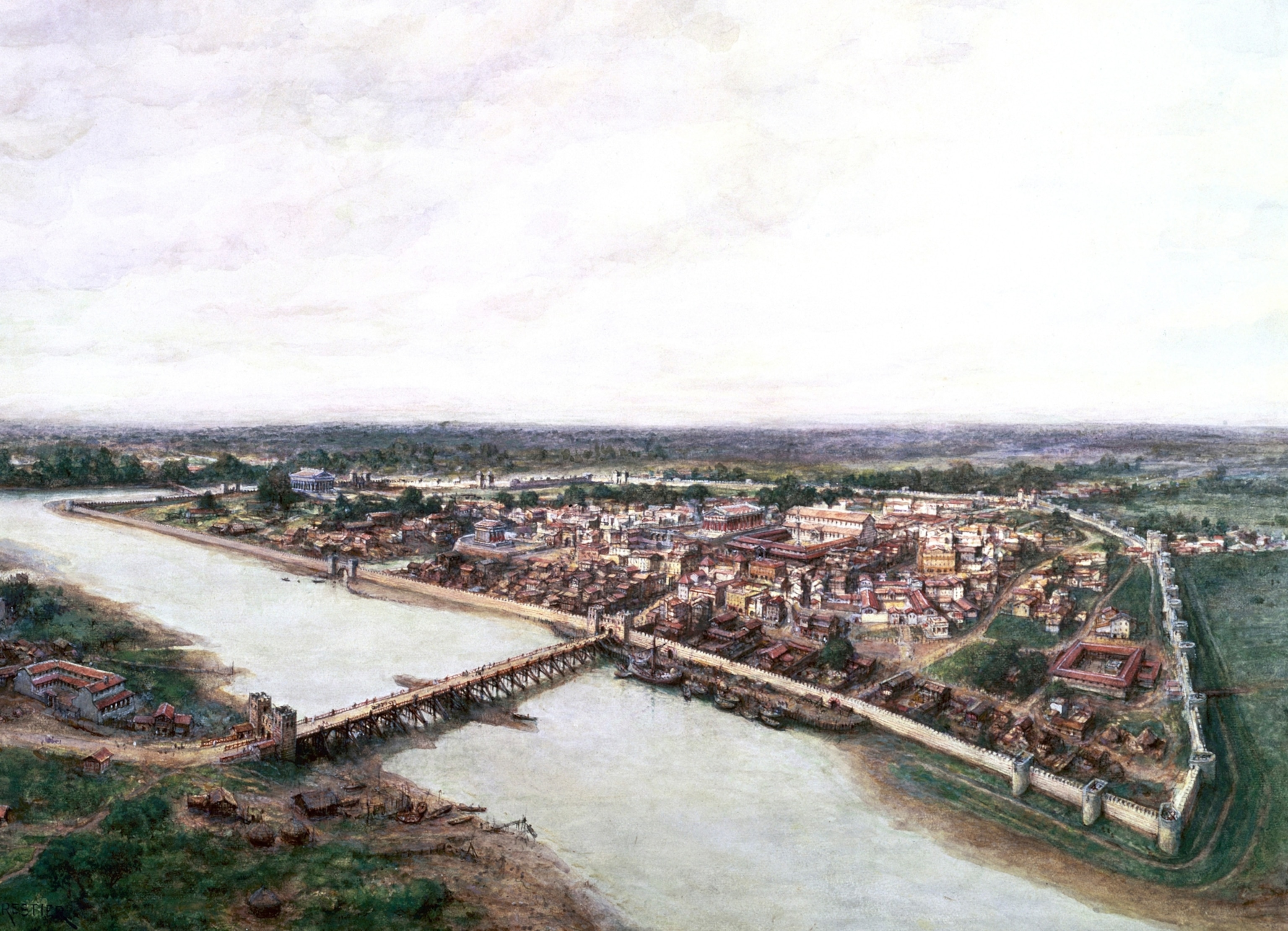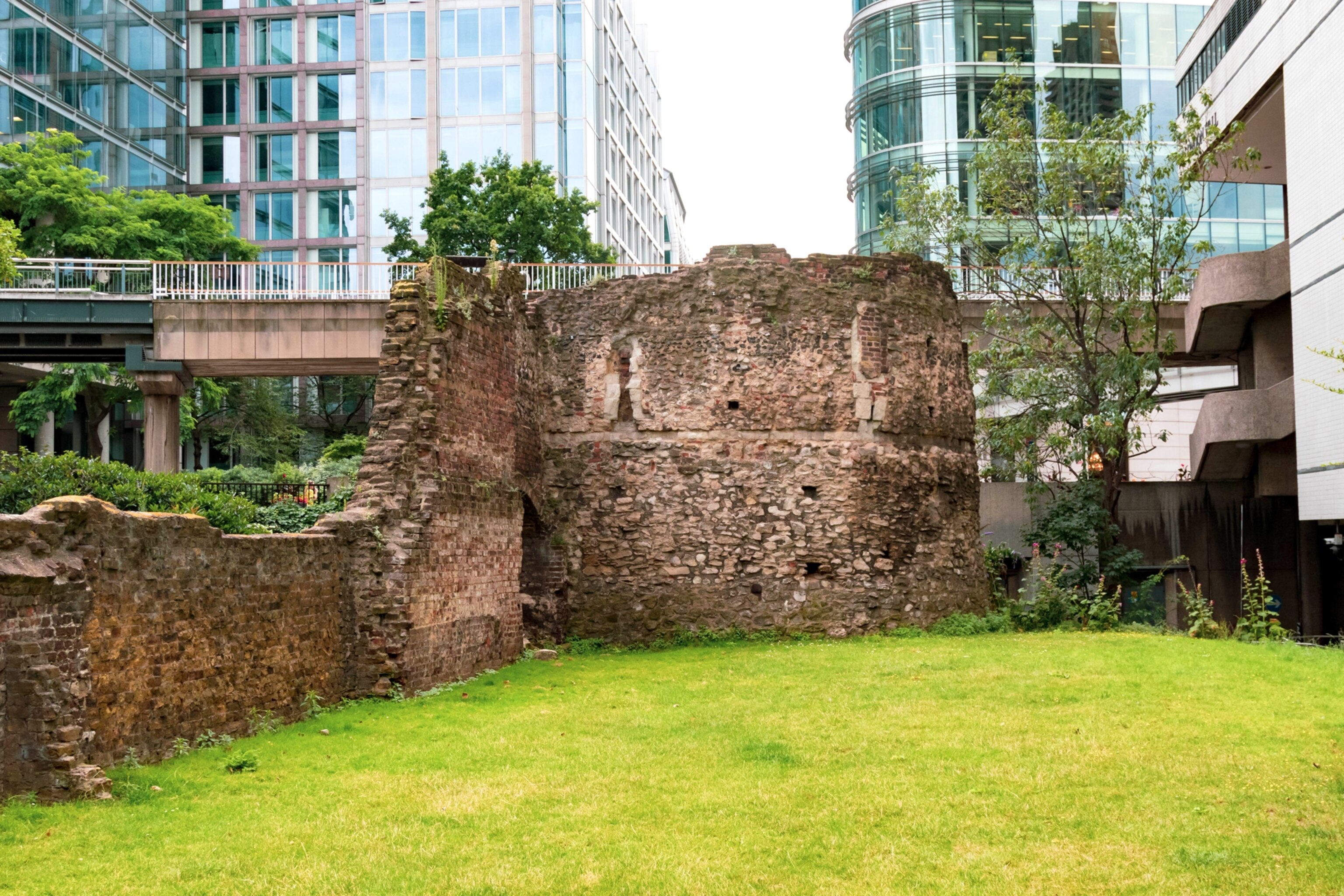
Discover the secrets of London’s oldest Roman road
In the British capital, a street can have many names—and surprises—if it’s been around for almost 2,000 years.
Roads are like people: You can never presume to know all the stories simmering beneath the surface. British historians tend not to shout about invaders marching up through the center of London, but the street known on highway signs as the A10 is a route with Roman roots.
In a span of some 90 miles, the road stretches from London Bridge to Cambridge and beyond, linking everything from glassy skyscrapers to grassy pastures before branching out to ancient settlements in Norfolk and Yorkshire.
This road’s story begins almost 2,000 years ago, when the Romans marked their arrival in Londinium with a wooden bridge over a narrow stretch of the Thames River. Up the north bank, they built a colonnade, and before it, a lively wharf where they’d unload olive oil, wine, and fish sauce from the old country—anything to make the local food palatable.
The resulting road, referred to as Ermine Street in centuries past, terraced up a gentle hill and leveled off at a great forum, likely about half the size of Rome’s. The road then breached the defensive stone ramparts that surrounded Londinium, before taking a straight shot north.

A destination itself
My stretch of the road, which runs behind my northeast London house, is unusually neighborly for the British capital. Most mornings—when the city is not in a pandemic lockdown—you can find me buying bananas from the Bengali grocery. I’ll get my almond milk latte from the Italian barista with the twisty moustache in a café where stripped-back walls reveal tilework from the butcher shop that operated on this site 100 years ago. I may pick up a paper from the Egyptian newsagent, who has placed a sign in the window proudly proclaiming his establishment “porn free.”
I recognize the geezers queuing outside the kebab shop and the old rockers who used to play the basement clubs—and they know me as “the American,” though I’m Canadian and have lived in this neighborhood for more than a decade. Pounding this pavement with the curiosity of a foreigner has helped me to picture it not as a channel carrying people north and south, but as a lure, drawing them from west and east. Yes, a road can be a destination, the point of travel itself. Many are—even those you can see from your bedroom window.
If I look down at just the right time while out for a stroll, I’ll often spot a bit of wall exposed between office towers, a relic that survived the fall of the Roman Empire and the following thousand years of economic changes and recovery. By the Middle Ages, Londoners were starting from scratch. Ever sturdier versions of London Bridge followed, ultimately shifting a hundred feet west of the original. The new thoroughfare headed farther uptown. The blocks they left behind became the quaint-sounding Fish Street Hill.

If there’s anything that keeps London visitors on their toes, it’s the tendency of these ancient roads to change names every few blocks. North of Fish Street Hill, just as I get used to the road becoming Gracechurch Street, it abruptly morphs into Bishopsgate, named for an entry into the old walled city. Then, for two blocks, Norton Folgate takes over. According to Elizabethan lore, this stretch is where playwright Christopher Marlowe once pummelled a foe or two into the cobbles.
(Related: London’s Big Dig reveals amazing layers of history.)
Two for the road
My own exploits on the road began on the scrappy section continuing from Norton Folgate, where it turns into Shoreditch High Street. When I started coming to the area nearly 20 years ago as a young, newly married expat from Toronto, the sooty facades offered few reminders of the blue-collar community that once thrived here: the words “commercial ironworks” emblazoned on a mosaic frieze, a palimpsest on a brick wall advertising pianos.
We’d arrive by Tube and squint through the night for a bacchanal in a former stable or warehouse. Friends opened a bar in a former handbag-exporter’s shop, exhibiting graffiti art by future celebrities living out of their cars. We’d stop in after bún xào in Little Hanoi, the only neighbors with the lights on.
(Related: Discover the world’s 21 best food cities.)
I had a vague understanding that Hadrian had been here first, but I was preoccupied with the road that was reinventing itself there and then. When an American Apparel boutique popped up, we jeered: this was no place for manufactured hipster grit. I couldn’t have predicted an Ace Hotel would follow within the decade, along with a luxury, mixed-use high-rise called The Stage, so named because Shakespeare’s Curtain Theatre once stood just a few yards behind.
Parenthood forced us to seek out our narrow Victorian row house north of Regent’s Canal—the same canal where I’d once watched police pull out a suitcase containing a woman’s torso. A major cleanup thereafter means the most sinister thing you’re likely to find lurking today is a discarded mochaccino cup. But that’s another story.

Millennia of diversity
Up here, the artisanal gin joint Original Sin and the wig shop Afro World, where you can pick up a cherry-red synthetic hairpiece for $25, operate next to betting parlors and bike mechanics. Meanwhile Cypriots and Pakistanis, Bajans and Hasidic Jews coexist in that aloof way that in London passes for harmony.
Canadians too, of course. And though I don’t do “aloof,” my earnest otherness hasn’t hampered my assimilation. Around these parts, otherness is assimilation. Yet I still approach the road in the manner of a tourist. When the walk to the bus stop offers a portal to other cultures and eras, it’s hard not to.
My neighbors and I like to talk about how charmingly multicultural the road is. We claim victory when friends from Notting Hill or Camden—once far more trendy—make the pilgrimage to some refashioned Jamaican jerk shack favorably reviewed in the Guardian. What a revelation this road is, even for native Londoners.
Except multiculturalism here is not new—it’s influenced this route since the time of togas. My own arrival follows an illustrious history of invaders since Queen Boudicca ransacked the Roman stonework. I succeed generations of gentrifiers, from the Huguenot exiles weaving silk outside the old walls in the 17th century to the Hasidim building synagogues a century later.
(Related: Why diverse perspectives make for better travel stories.)
The other week I grabbed a pint at The Three Crowns pub. There’s been a pub at this spot, slinging ale with attitude, since 1634. My daughter’s school used to take an annual field trip to an almshouse built on the road 300 years ago and converted into a museum. However unwittingly, we’ve become protectors of two millennia, bridging the road into the next.
You’d be hard-pressed to find many Brexiteers on this length of tarmac. Not here, where you’re as likely to overhear Polish or Yiddish as the Queen’s tongue. With the coronavirus pandemic, there are many more urgent issues to debate today, from restricting travel to—sacrilege!—closing pubs. But these Londoners are keeping calm. The road has seen as bad or worse. Even the Romans knew their stone ramparts wouldn’t stop the flow of outsiders for long. Sometimes you have to look back to move forward.







